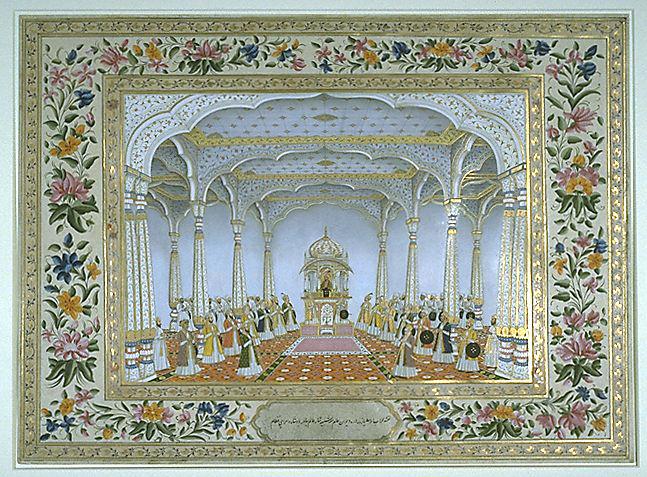

Shah Alam II (r.1759-1806) holds court, c.1780: *"The Royal Chamber in the Public Audience Hall in the Middle of Yazdah Darreh, with the Ruler, Alam Bahador Badshah, and the Great Commanders, a page from the Lady Coote Album, circa 178p; with ZOOM capabilities* (FAMSF)
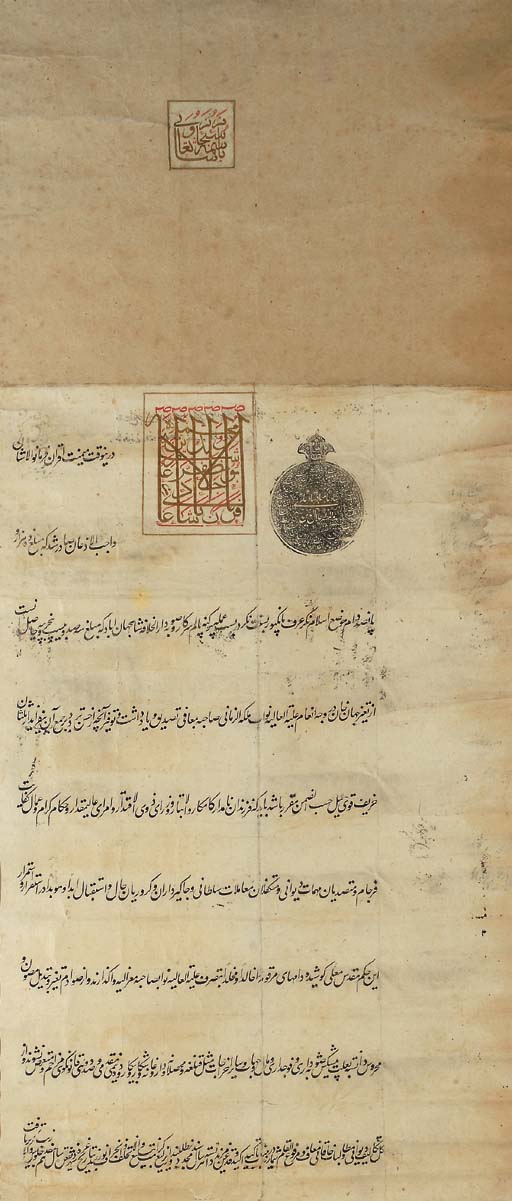
An imperial order, or farman, from the time of Shah 'Alam II, dated 1776
Source:
http://www.christies.com/LotFinder/search/LotDetail.asp?sid=&intObjectID=3052236&SE=CMWCAT01+456+1836777625+&QR=M+1+137+Aqc0000900+423++Aqc0000900+&entry=india&SU=1&RQ=True&AN=138
(downloaded Oct. 2001)
"FIRMAN. Period of Shah 'Alam, Mughal India, AH 1 Dhu'l Qa'da, 7th regnal year/12 December 1776 AD. Persian manuscript on cream paper, 9ll. of black nasta'liq with large seal impression of Shah 'Alam above dated 1173 next to gold tughra, a further gold inscription above, mounted, framed and glazed Document 44 x 18¾in. (111.8 x 47.2cm.)."
"Lot Notes: This firman concerns the allocation of 10500 dam, a small amount of money, from one Islam Negar. The tughra reads firman-e abu'l muzaffar jalal al-din muhammad shah 'alam padshah-e ghazi, The edict of Abu'l Muzaffar Jalal al-Din Muhammad Shah 'Alam, the triumphant King.The reign of Shah 'Alam II began in the year 1173/1759 and he ruled until 1221/1806 with one brief interruption. The seal impression is dated in his first regnal year, 1173/1759-60."
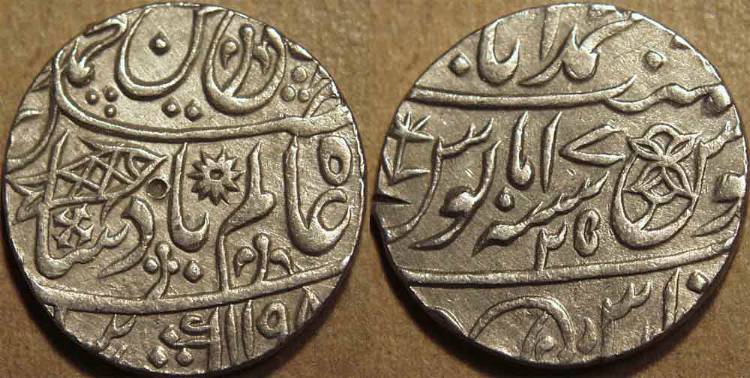
A Bengal Presidency silver rupee with two dates: one, of the official regnal year of Shah Alam II-- and the other, of their own coinage
Source:
http://www.vcoins.com/ancient/coinindia/store/viewitem.asp?idProduct=582
(downloaded Jan. 2008)
"British India, Bengal Presidency: Silver rupee in the name of Shah
Alam II, Banaras, AH 1198 [1783/4], RY 25. Obverse: Legend, including
AH
year 1198. Reverse: Legend, including mint name Muhammadabad Banares,
mintmark
fish and double regnal years 17 and 25. The East India Company acquired
the mint at Banares from the Raja of Awadh in 1776, soon after the
Battle
of Plassey. The coins they issued from this mint showed a double regnal
year, the fixed RY 17 (the RY of the first British issues) and then the
progressive RY until the death of Shah Alam II in his RY 49."
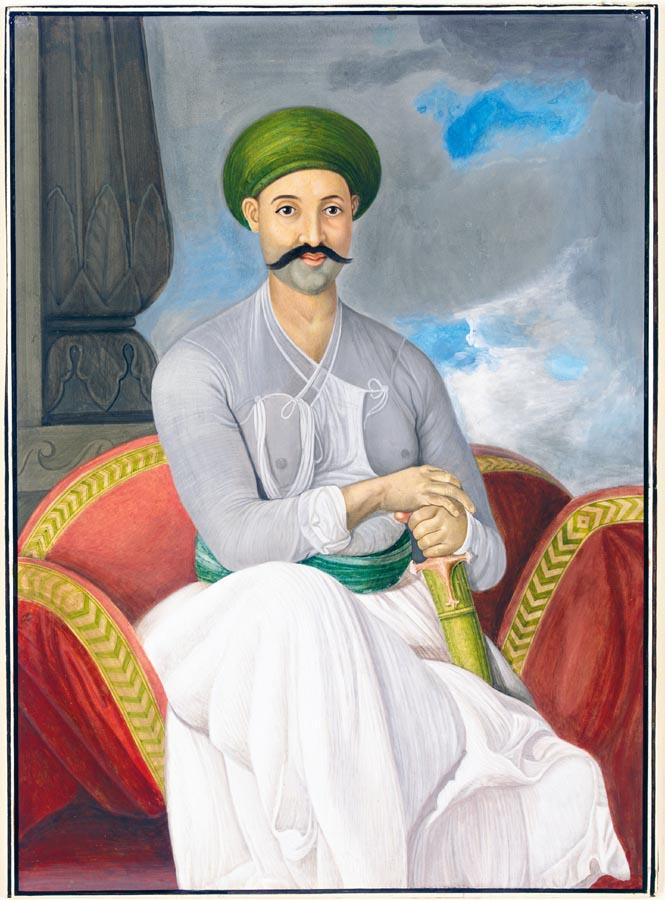
The young prince Mirza Javan Bakht, Shah Alam's eldest son, c.1786, in "Company School" style
Source:
http://search.sothebys.com/jsps/live/lot/LotDetail.jsp?lot_id=4FGN5
(downloaded May 2005)
"A PORTRAIT OF PRINCE MIRZA JAWAN BAKHT, COMPANY SCHOOL, LUCKNOW, INDIA, CIRCA 1786; watercolour and gouache on card, with a seated figure dressed in white with green waist sash and turban, holding a sheathed sword, unframed; inscriptions: in ink on the reverse in Urdu: 'the likeness of Mirza Jewan Bakhat'
This portrait is after a painting of the Mughal prince Jawan Bakht, which was attributed to the celebrated Scottish artist Charles Smith. Smith was a contemporary of Johann Zoffany, and an adventurer-artist who travelled widely throughout India under the protection of his country-man, the Governor-General, John Macpherson. Macpherson, whose arrival in 1785 guaranteed work for Smith, introduced the artist to the Nawabs of areas far removed from central British rule. In this way oil portraits were commissioned from Smith by such Indian dignitaries as the Nawab of Oudh, Asaf-ud-Daula, and the present sitter, Jawan Bakht.
Zoffany is recorded as having produced several portraits of Jawan Bakht, yet only a simple sketch of the Prince within a group portrait has survived. This large, three-quarter length oil painting in a different hand from Zoffany's is however extant today, and is believed to have been executed by Charles Smith (Archer 1979, p.181, no.111). The painting exhibits various features of the latter artist's style, such as the characteristic, unadorned simplicity. Most tellingly however is the portrait's similarity to a miniature by the artist Ozias Humphry (1742-1810), who was concurrently painting miniatures of Smith's patrons at the Nawab's court (Archer 1979, p.186, no.115). This lot is closely comparable to the original oil painting, which was last recorded by Mildred Archer as hanging in an Indian private collection (Archer 1979, p.451, note.4).
Prince Jawan Bakht was the eldest son of the Mughal Emperor Shah Alam, who visited Lucknow in 1784 to ask Warren Hastings' help in freeing his father from the Mahrattas. Hastings wrote that he found the Prince "gentle, lively, possessed of a high sense of humour, of a sound judgement, an uncommonly quick penetration, and a well-cultivated understanding, with a spirit of resignation and an equality of temper almost exceeding any within reach of my own knowledge or recollection"."
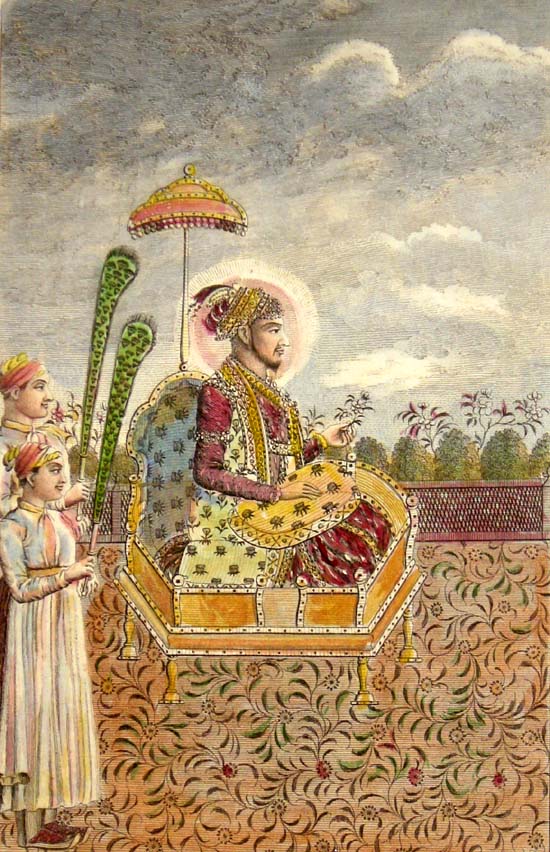
"Shah Allum the Present Emperor of Hindostan," a steel engraving from the 1790's (with modern hand coloring)
Source: ebay, July 2007
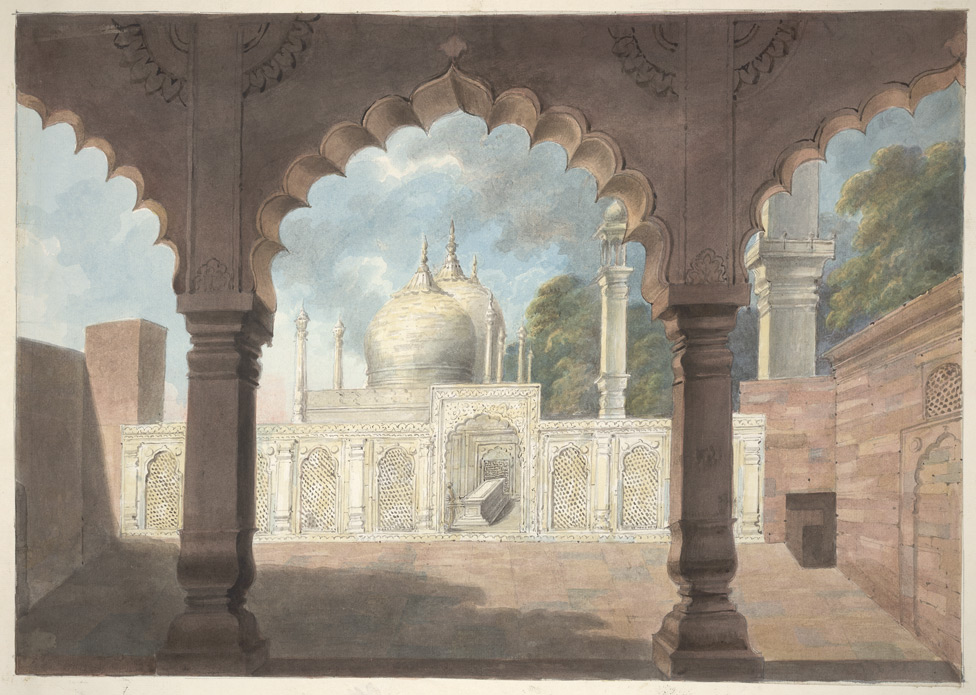
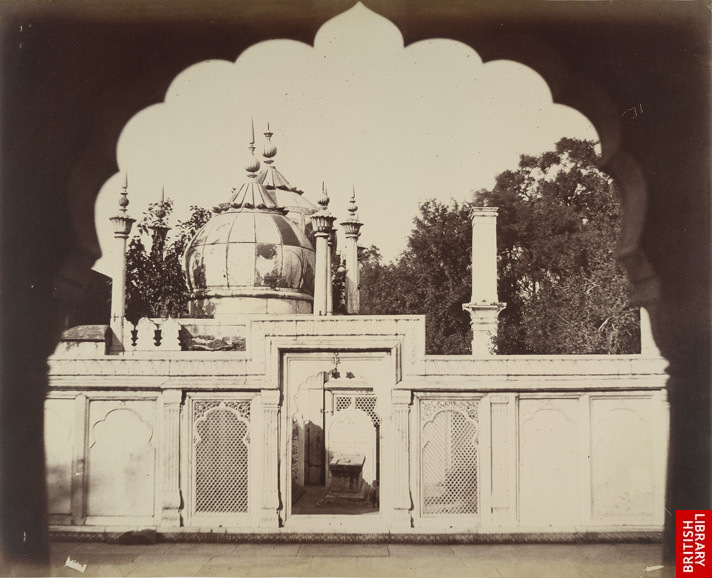
*Tombs of the Kings of Delhi [Shah Alam's Tomb]; a photo by Robert and Harriet Tytler, 1858* (BL)
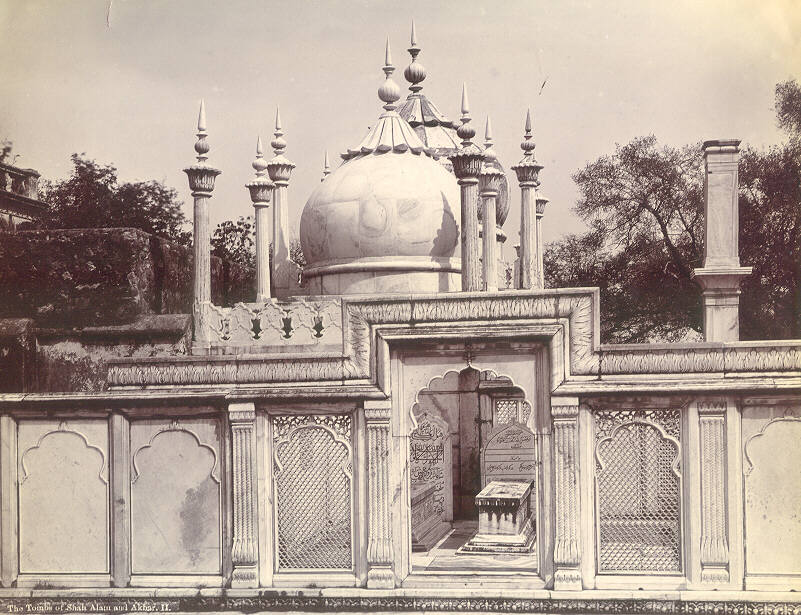
"The Tombs of Shah Alam and Akbar II," a gelatin silver photo, c.1890's
Source: ebay, Nov. 2007
== Indian Routes index == Indian Routes sitemap == Glossary == FWP's main page ==